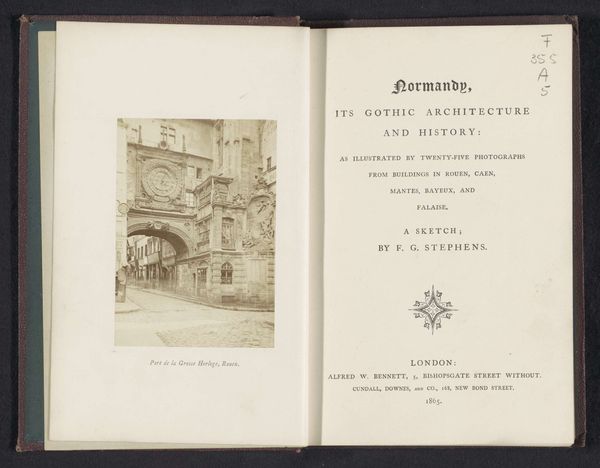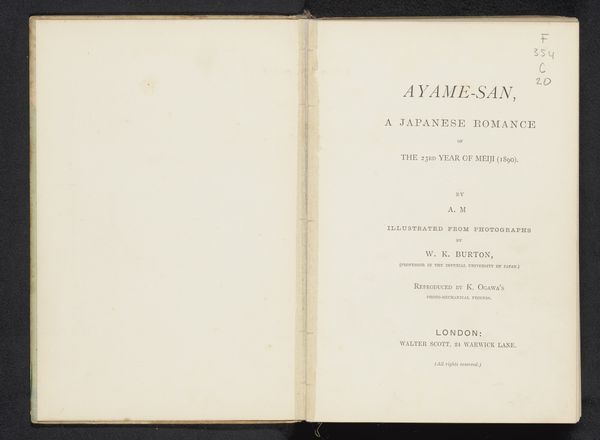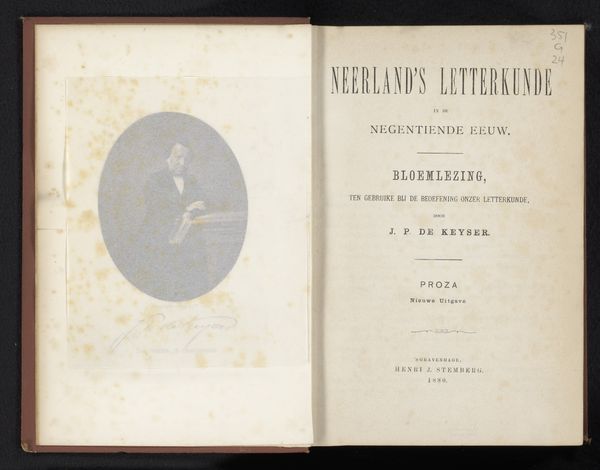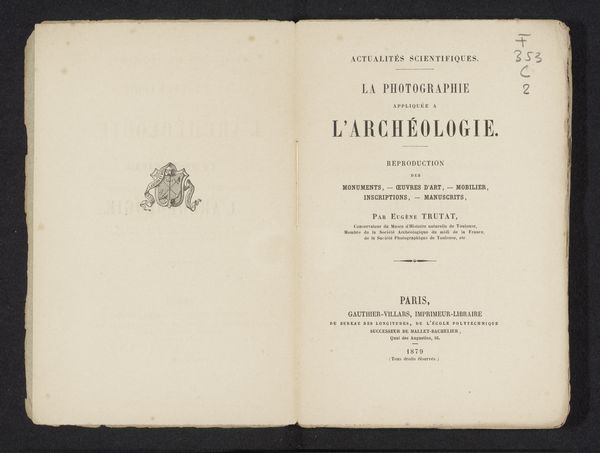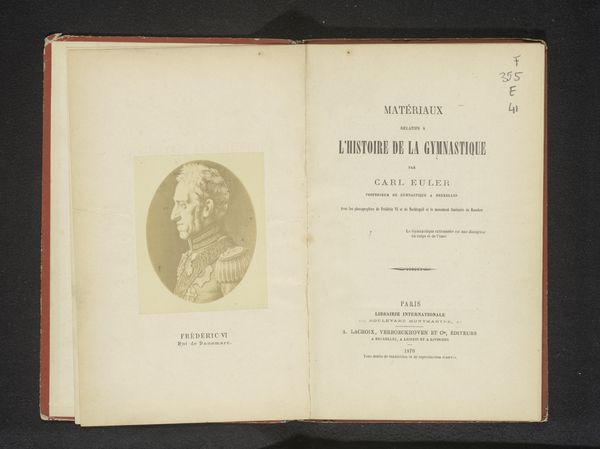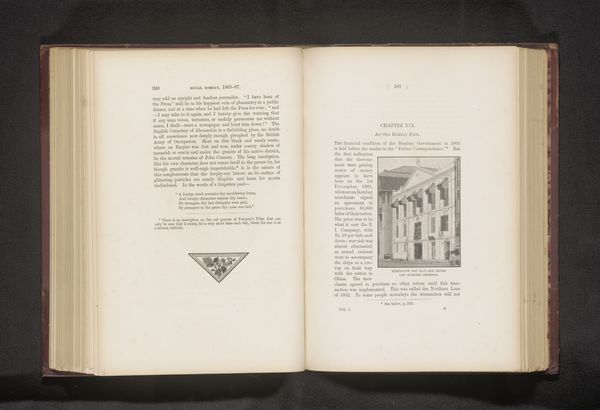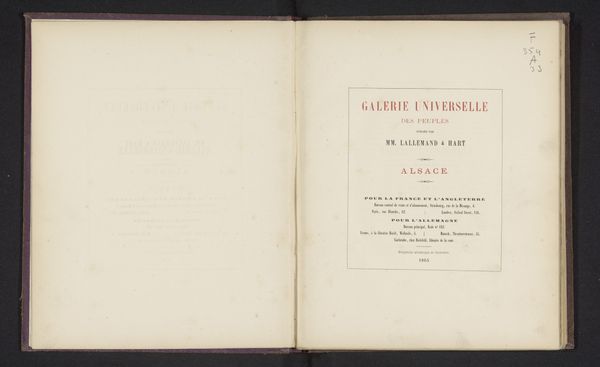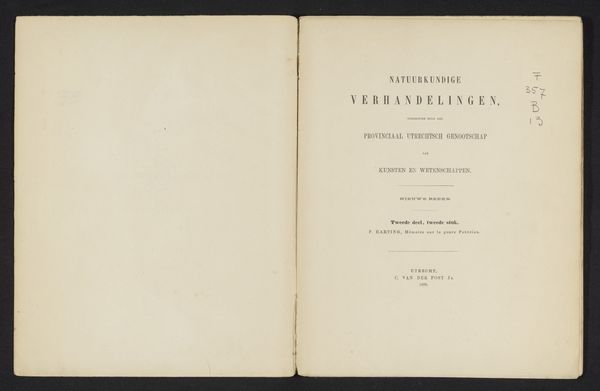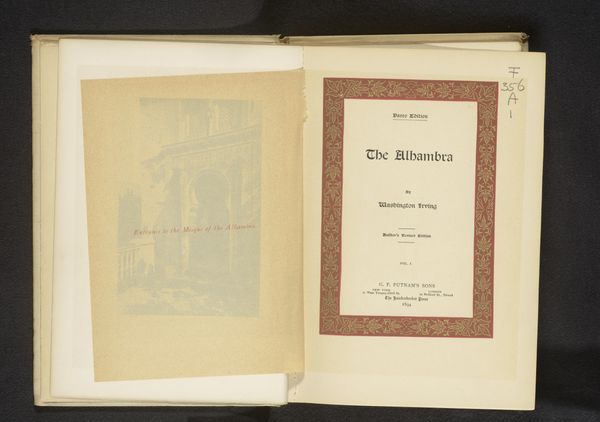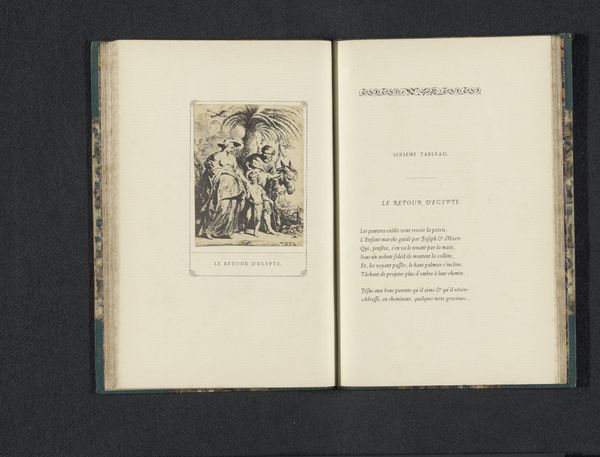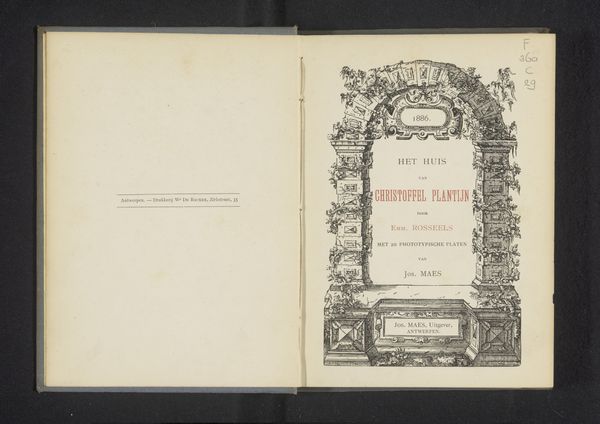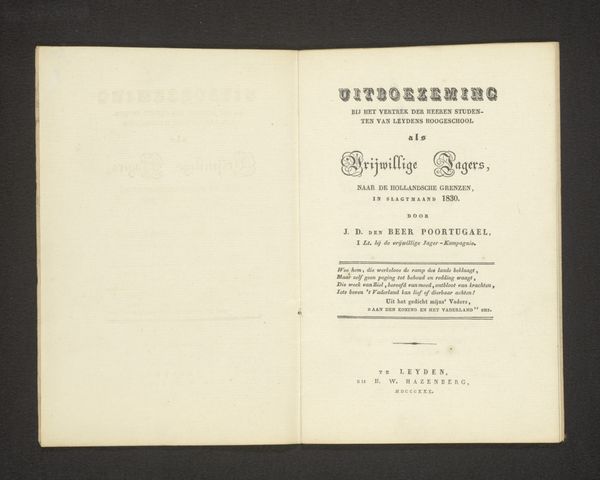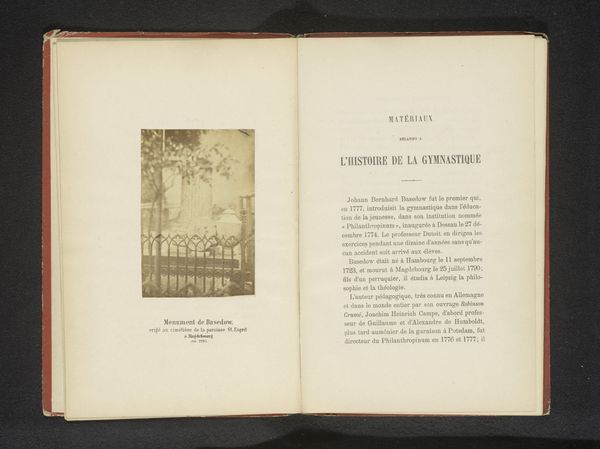
Normandy, its gothic architecture and history, as illustrated by twenty-five photographs from buildings in Rouen, Caen, Nantes, Bayeux, and Falaise 1865
0:00
0:00
print, photography, architecture
# print
#
landscape
#
photography
#
cityscape
#
architecture
Dimensions: height 218 mm, width 146 mm, thickness 18 mm
Copyright: Rijks Museum: Open Domain
Editor: This is "Normandy, its gothic architecture and history, as illustrated by twenty-five photographs from buildings in Rouen, Caen, Nantes, Bayeux, and Falaise," created in 1865 by Frederic George Stephens. It’s a print of a photograph and gives me such a strong sense of place, even now. I wonder, what do you see in this piece? Curator: I see an example of how photography began to shape perceptions and romantic notions of historical places like Normandy. Stephens, a member of the Pre-Raphaelite Brotherhood, used the relatively new medium of photography not just to document architecture, but to curate an experience, framing buildings in a way that emphasized their grandeur and, frankly, their picturesque qualities. Editor: So, it’s less about pure documentation, and more about constructing a narrative? Curator: Exactly. Think about the intended audience. Who was likely purchasing such a volume in 1865? People with the means and the inclination to travel, perhaps, or to fantasize about travel. These photographs contribute to a kind of cultural tourism, packaging Normandy's "gothic architecture and history" for consumption. What do you notice about the photograph itself? Does the focus and clarity serve its role? Editor: Well, the detail is really quite stunning. But you're right; it definitely feels staged, in a way. Everything seems placed just so to convey a certain impression. Curator: Consider how this contrasts with, say, the use of photography by social reformers at the time. Here, photography serves to ennoble and aestheticize, rather than to expose or critique. Editor: I never really thought about it that way, about photography as shaping even historical perception! I thought the image spoke for itself, but its cultural packaging and historical setting definitely enrich my viewing experience. Curator: That is why socio-cultural context matters; our perceptions are definitely skewed when we look at art!
Comments
No comments
Be the first to comment and join the conversation on the ultimate creative platform.
